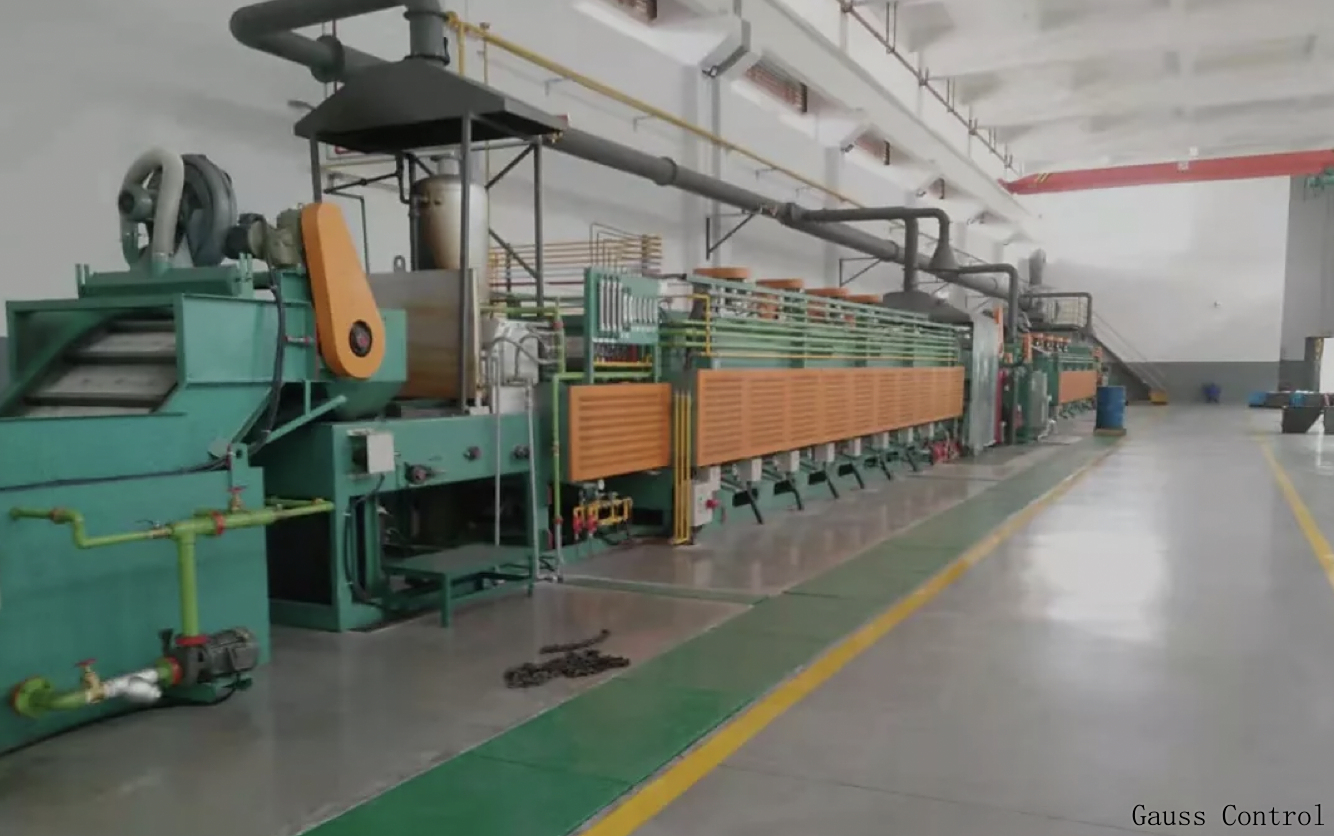

"Daily Heat Treatment Learning has launched a Douyin version, allowing you to learn knowledge while watching videos. Search for "Daily Heat Treatment Learning" or "Heat Treatment Liu Liu" on Douyin to find our editor... This article has been converted into a video, come and learn together on Douyin!
Duration 01:32
Most heat treatment books are daunting and intimidating. But there is a group of people who are so awesome - they have compiled the rigid and difficult heat treatment audit skills into catchy rhymes, isn't that amazing!
Heat treatment audit jingle
-- Mesh belt continuous furnace - Quenching and tempering."
1. Zone Division
Separate Heated and Unheated Areas。
Different products should have designated storage areas。
2. Empty Container Inspection
Daily Checks During Product Changeover。
Ensure no residue remains at the bottom of empty containers。
3. Loading and Weighing
Weigh Before Loading onto the Line。
Spread the material evenly and ensure appropriate thickness。
4. Tempering Delay
Interval Between Quenching and Tempering。
For non-continuous processes, adhere to the specified interval time to avoid tempering delays。
5. Testing Items
Surface Hardness, Microstructure, and Eddy Current Testing。
Perform surface hardness tests twice a day, daily microstructure examinations, and utilize eddy current testing to eliminate hardness and crack defects。
6. Bath Concentration
Daily Inspection with a Refractometer
Pay close attention to the risk of bath concentration, especially for the dephosphorization bath.
It is recommended to have a separate tank for this process.
7. Temperature Control
Monitor thermocouples in each working zone.
Ensure no leaks in water or oil tanks.
Temperature fluctuations should remain within specified ranges: ±10℃ for heating zones and ±5℃ for tempering zones.
Analyze temperature data and verify alarm functionality on-site.
Base metal thermocouples are the primary type used and require regular replacement: annually for heating zones and every two years for tempering zones.
8. SAT (System Accuracy Test):
Conduct SAT tests under both empty and loaded conditions.
Utilize probe comparison or multiple comparisons within the same zone with dual thermocouples.
Perform SAT monthly. If using the probe method, conduct tests quarterly.
9. TUS (Temperature Uniformity Survey)
Employ the TUS plane method, adjusting the number of thermocouples based on furnace chamber dimensions.
Perform TUS annually or after major repairs.
10. Carbon Potential Control
Monitor data fluctuations from the carbon potential sensor/oxygen probe, ensuring they remain within ±0.05% upstream and downstream.
Verify alarm functionality daily.
Utilize either the weight-loss method with fixed carbon foils or the direct measurement method with a three-gas analyzer.
Ensure consistent flow rates and regularly burn off accumulated carbon in the furnace chamber with the support of nitrogen as a protective gas to maintain a stable atmosphere.
11. Oil Tank Control
Monitor oil level and agitation in oil tanks, ensuring continuous functionality of alarm devices.
12. Oil Testing
Conduct oil performance tests every six months as oil properties are critical.
13. Instrument Calibration
Regularly calibrate instruments for temperature and carbon control without taking shortcuts.
Notes Section:
Heat Treatment:
Heat treatment is a metal thermal processing technology that involves heating, holding, and cooling materials in a solid state to achieve desired microstructure and properties. -- Excerpt from Baidu
5. Eddy Current Testing:
Principle:In an eddy current probe, alternating current flows through a coil, generating an oscillating magnetic field. When the probe and its field are near the conductive material of a metal test piece, circular flows of electrons, known as eddy currents, begin to move through the metal like swirling water in a stream. The eddy currents flowing through the metal, in turn, produce their own magnetic field, which interacts with the coil and its field through mutual inductance. Defects such as large fluctuations in metal hardness or surface cracks will affect the coil impedance, interrupting or changing the amplitude and pattern of the eddy currents and the magnetic field they generate.
8. SAT (System Accuracy Test):
Comparison Method:** Compares the uncorrected readings of the control and resident thermocouples (which can be the same as the control thermocouple or an over-temperature thermocouple).
Probe Method A: Compares the uncorrected temperature control system readings (control thermocouple, wires, control instrument) with the corrected test temperature system readings (test thermocouple and test instrument).
Probe Method B: Compares the uncorrected control thermocouple readings with the corrected test temperature system readings (test thermocouple and test instrument).
9.TUS (Temperature Uniformity Survey):
Determines the temperature uniformity characteristics, effective working zone, and working temperature range within the furnace.
Temperature uniformity characteristics allow a maximum error of: ±15°C for quenching furnaces, ±10°C for tempering furnaces.
End
Source: Purchasing Center (ID: SGMW_PSC)
Author: Yang Jie


